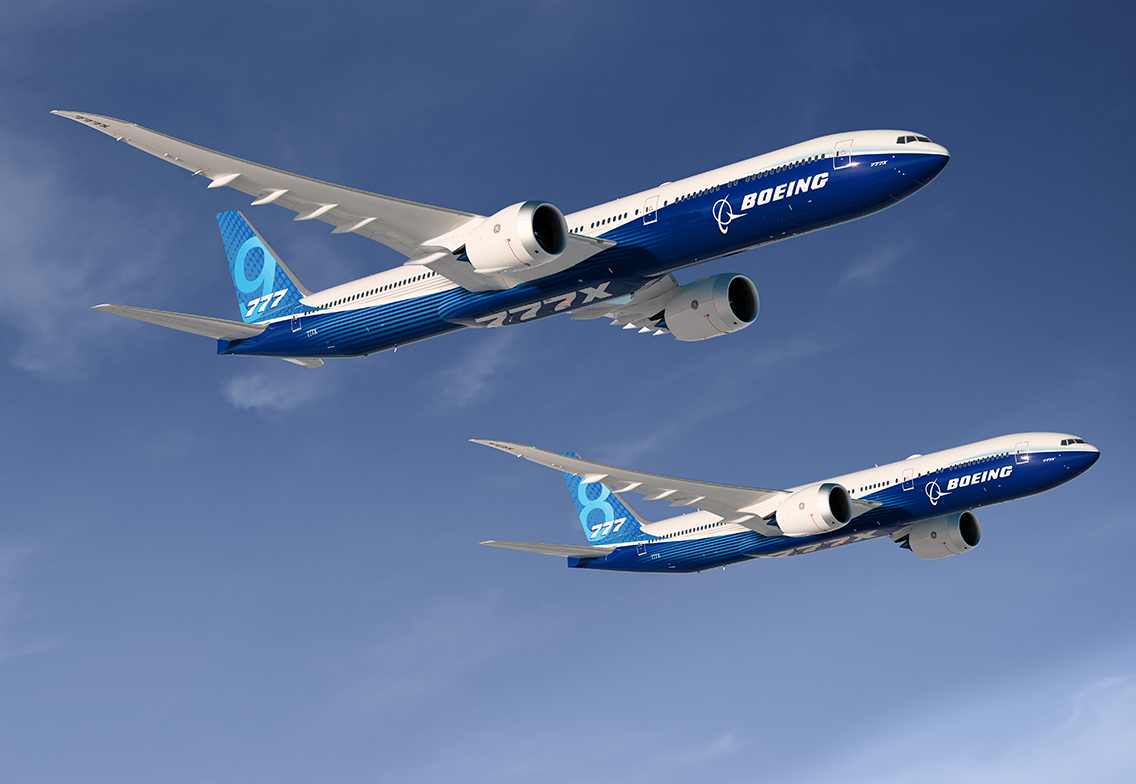Boeing slows work on ultra-long-range 777X may pose problem for Qantas timetable
15 August, 2019
3 min read
By joining our newsletter, you agree to our Privacy Policy


Boeing has slowed work on the ultra-long-range 777X and this may pose a problem for the Qantas order for an aircraft able to fly from Sydney to London nonstop with 300 passengers in 2023
According to the website, The Air Current the company has put back the development of the 777X-8 due to the ongoing 737 MAX crisis and the delayed first flight of the 777X-9.
The 777X-9 which was rolled out in March was due to fly in July but this has been put back to early 2020 because of issues with the GE engine.
But in a statement to Airlineratings.com Boeing said:
"We reviewed our development program schedule and the needs of our current 777X customers and decided to adjust the schedule. The adjustment reduces risk in our development program, ensuring a more seamless transition to the 777-8. We continue to engage with our current and potential customers on how we can meet their fleet needs. This includes our valued customer Qantas. We remain committed to the 777-8, which will be the most flexible commercial jet in the world and offer our customers optimal range and payload."
However, Reuters says that a Boeing source said that the company was "offering a compelling option to Qantas" for its ultra-long-range requirement.
Airbus is offering Qantas a modified A350-1000 for the Sydney to London route.
The 777X-8 is the candidate for the Qantas ultra-long-range mission for Sydney to London and the Australian airline said that it wanted delivery in 2023 and the slip in the schedule may push the Boeing offering back to 2024.
The 777X-8 only accounts for 45 of the 334 aircraft on order and was due to be available in 2022.
The aircraft combines the best features of the current 777 with a longer and wider fuselage, new engine and the composite wing design from the Boeing 787.
It also features 20 per cent larger windows and lowers pressurization altitude to reduce jet lag.
WATCH: Amazing thermal video of Boeing 757 landing
The 777-9X seats more than 400 passengers, depending on an airline’s configuration choices.
With a range of more than 8,200 nautical miles (15,185 km), the aircraft will have the lowest operating cost per seat of any commercial aircraft says, Boeing.
The second member of the family, the 777-8X, will be the most flexible jet in the world claims Boeing. The aircraft will seat 350 passengers and offer a range capability of more than 9,300 nautical miles (17,220 km).
The driving force behind the aircraft is Emirates President Sir Tim Clark, whose airline is the lead buyer with an order for 150.
Next Article
2 min read
Asiana Airlines crash - what is next?
Get the latest news and updates straight to your inbox
No spam, no hassle, no fuss, just airline news direct to you.
By joining our newsletter, you agree to our Privacy Policy
Find us on social media
Comments
No comments yet, be the first to write one.

